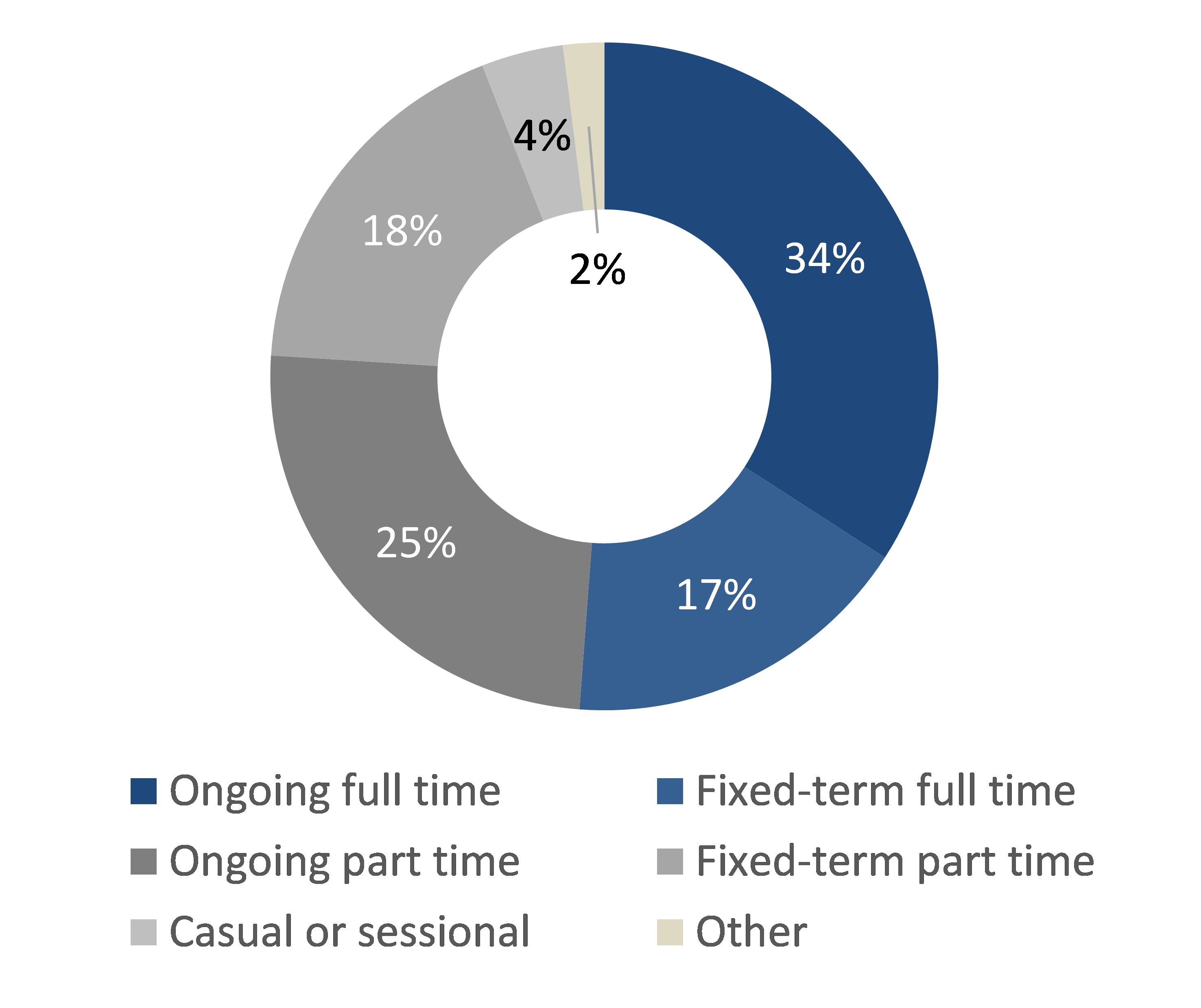This includes the nature of contracts held (full-time, part-time, casual or other; ongoing versus fixed term), average number of hours and days worked, and amount of unpaid work undertaken.
Exploring these conditions can assist in our understanding of any challenges they may face in undertaking their work, and aid in the interpretation of subsequent results throughout this report.
Overall, both the Census results and findings from the initial sector consultation suggested that workers in the primary prevention workforce were less likely than that of the average Victorian to hold a full-time role. Additionally, many employees reported that they were employed on fixed-term contracts, and many also reported working additional unpaid hours.
The Census results indicated that the roles held within the primary prevention workforce were highly varied in terms of working hours and contract conditions (i.e. ongoing versus fixed-term).
Figure 3 illustrates that just over half of the primary prevention workforce reported that they were employed on a full-time basis (51%) — lower than the average proportion across Victoria as a whole (67%1). Of the remaining 49%, the majority were employed on a part-time basis (43%), and very few were casual or sessional employees (4%).
Furthermore, although 59% were employed in an ongoing capacity, about 35% held fixed-term roles.
While those in the primary prevention workforce were less likely than the average Victorian to hold a full-time role, it should be noted that overall, almost one-fifth of this workforce reported that they held at least one additional paid role outside of the primary prevention workforce (17%), and one-in-ten held more than one paid role within this workforce (10%).
As shown in Figure 4 overleaf, the majority of the workforce (73%) reported that in the past fortnight, the number of hours they were employed to work was equivalent to the number of hours they ideally wanted to be employed to work in this role. The difference between actual and ideal hours worked naturally varied by basis of employment, with part-time employees generally more likely than full-time employees to report a desire to have been employed for a greater number of hours in the last fortnight.
Only a relatively small proportion of the primary prevention workforce were employed to undertake their work outside of business hours often or very often / always (7%-13% – see Figure 5), suggesting that only a minority undertake regular shift / evening work, or weekend work.
Although the majority were paid to undertake their work during normal business hours, one-third of the workforce reported that they often work additional unpaid hours (21% often and 13% very often / always), whilst a further 30% noted that they sometimes do so.
Footnotes
- Australian Bureau of Statistics, 6202.0 – Labour Force, Australia, Mar 2020.
Updated


